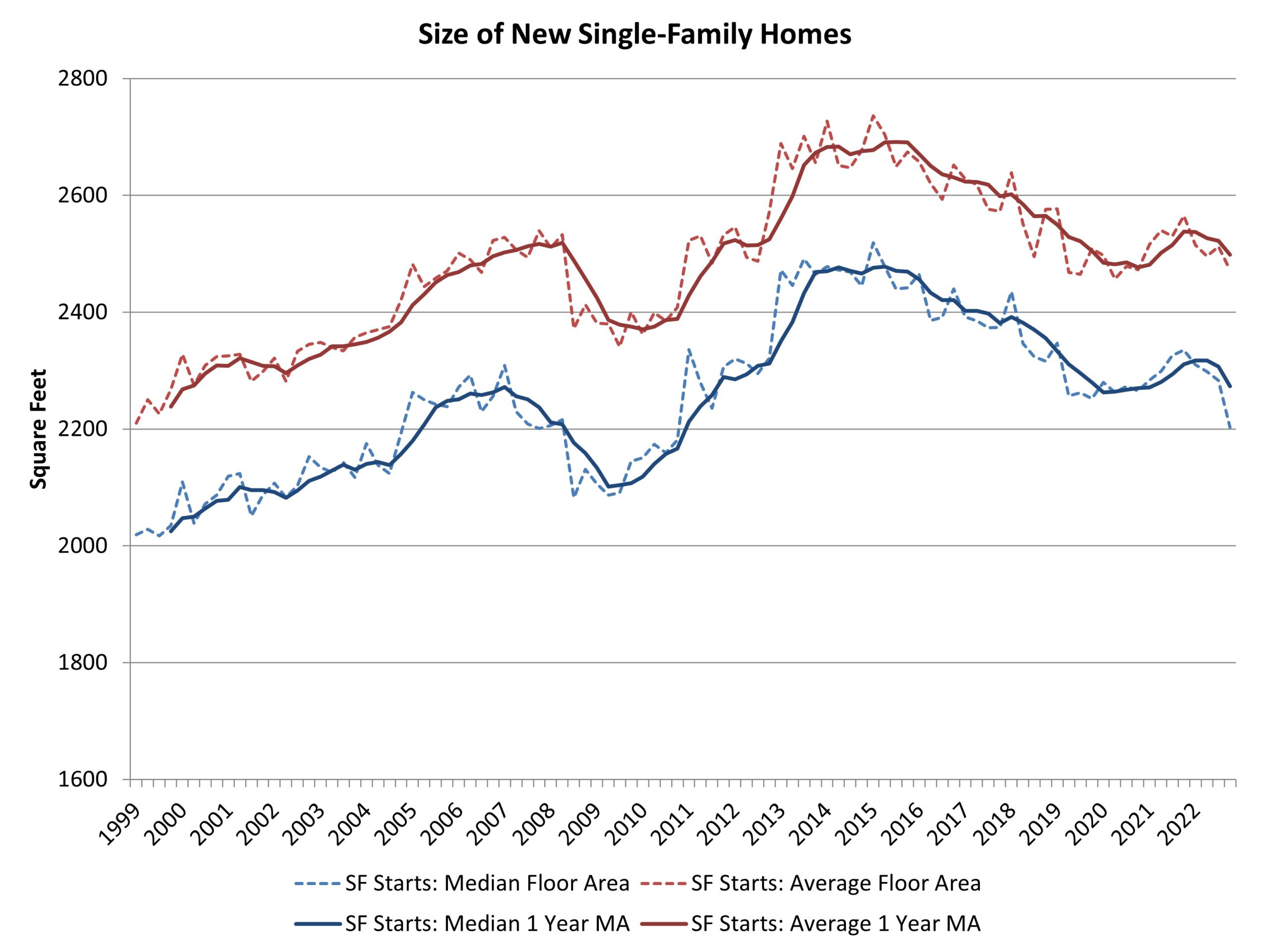An expected impact of the pandemic was a need for more residential space, as people use homes for more purposes including work. During the housing boom after covid, this led to a rise for new single-family home size. However, as the housing market weakens on lower affordability conditions, this trend has reversed.
According to fourth quarter 2022 data from the Census Quarterly Starts and Completions by Purpose and Design and NAHB analysis, median single-family square floor area declined significantly to 2,203 square feet (the lower level since 2011). Average (mean) square footage for new single-family homes fell to 2,472.

Since Great Recession lows (and on a one-year moving average basis), the average size of new single-family homes is now 4.7% higher, while the median size is 8.2% higher. However both measures will weaken in the coming months.
Home size rose from 2009 to 2015 as entry-level new construction was constrained. Home size declined between 2016 and 2020 as more starter homes were developed. Going forward we expect home size to face opposing determinants. A shift in consumer preferences for more space due to the increased use and roles of homes (for work among other purposes) will increase the demand for space, while tighter budgets due to elevated interest rates will reduce demand. The tighter budget factor is likely to dominate in coming quarters.
Related


